Abstract
The rhizotoxicities of Al3+ and of La3+ to wheat (Triticum aestivum L.) were similarly ameliorated by cations in the following order of effectiveness: H+ ≈ C3+ > C2+ > C1+. Among tested cations of a given charge, ameliorative effectiveness was similar except that Ca2+ was slightly more effective than other divalent cations and H+ was much more effective than other monovalent cations. H+ rhizotoxicity was also ameliorated by cations in the order C3+ > C2+ > C1+. These results suggest a role for cell-surface electrical potential in the rhizotoxicity of Al3+, La3+, H+, and other toxic cations: negatively charged cell surfaces of the root accumulate the toxic cations, and amelioration is effected by treatments that reduce the negativity of the cell-surface electrical potential by charge screening or cation binding. Membrane-surface activities of free Al3+ or La3+ computed according to a Gouy-Chapman-Stern model correlated well with growth inhibition, which correlated only poorly with Al3+ or La3+ activities in the external medium. The similar responses of Al-intoxicated and La-intoxicated roots to ameliorative treatments provide evidence that Al3+, rather than AlOH2+ or Al(OH)2+, is the principal toxic species of mononuclear Al. Comparisons of the responses of Al-sensitive and Al-tolerant wheats to Al3+ and to La3+ did not support the hypothesis that varietal sensitivity to Al3+ is based upon differences in cell-surface electrical potential.
Full text
PDF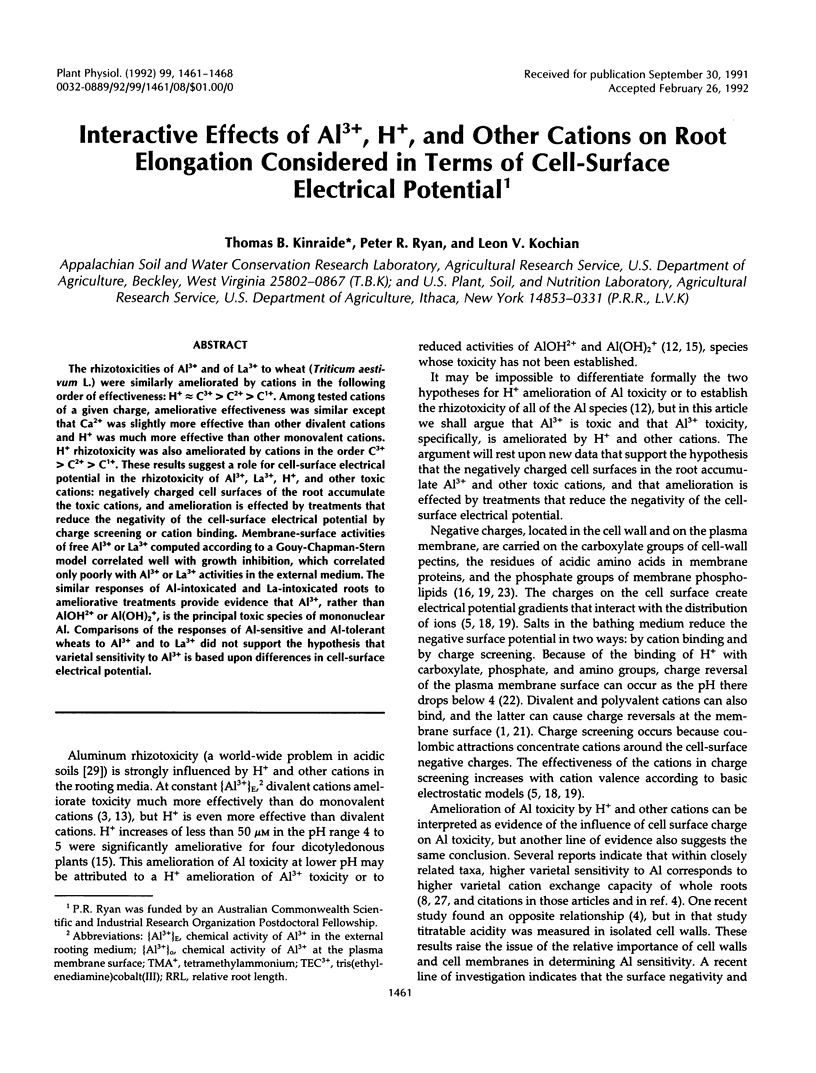
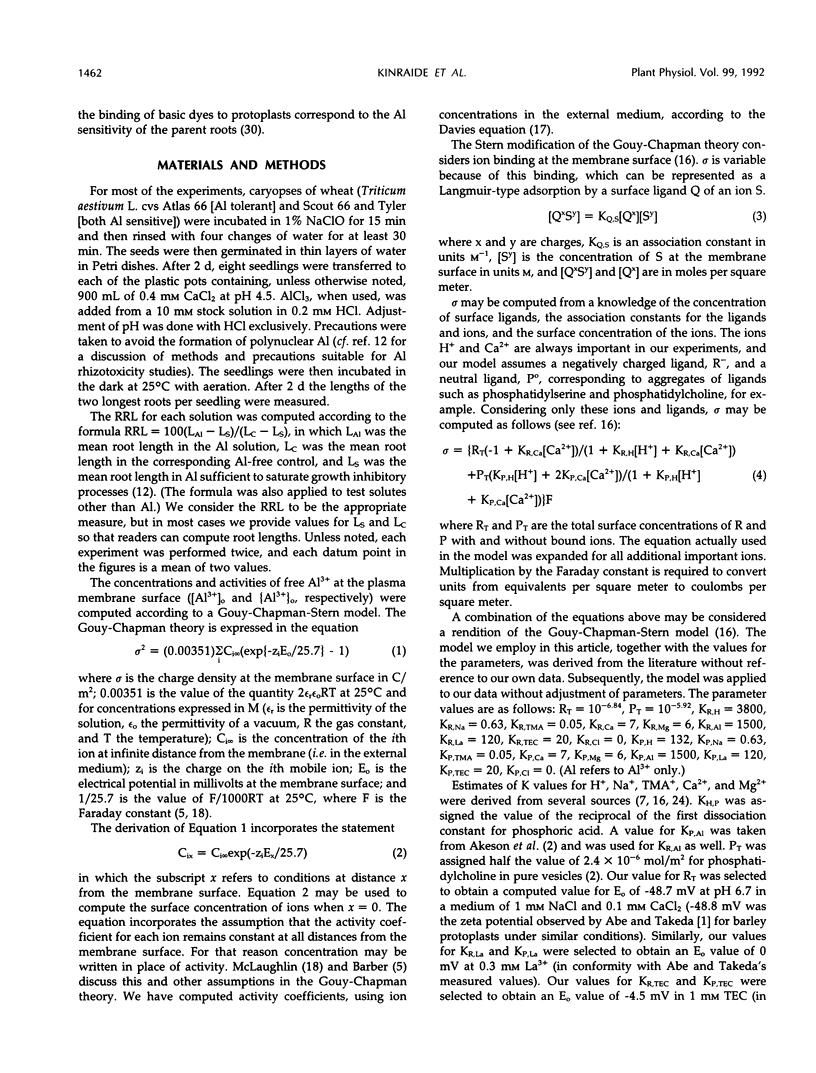
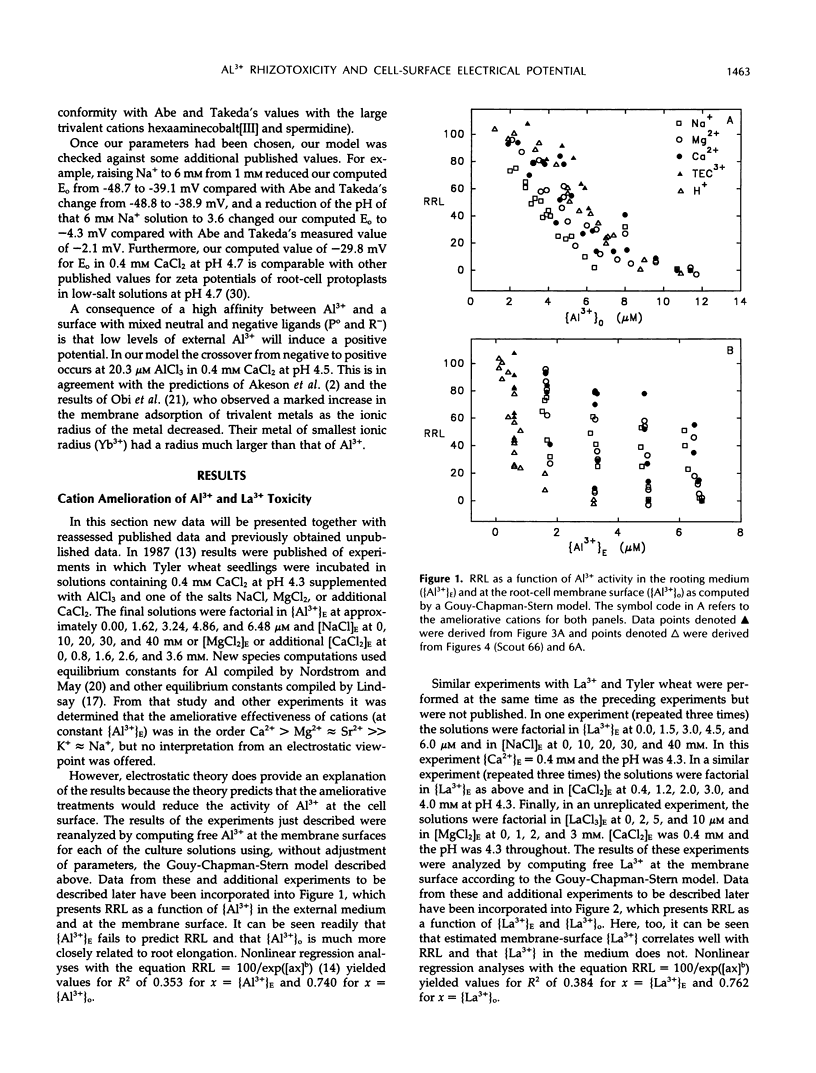
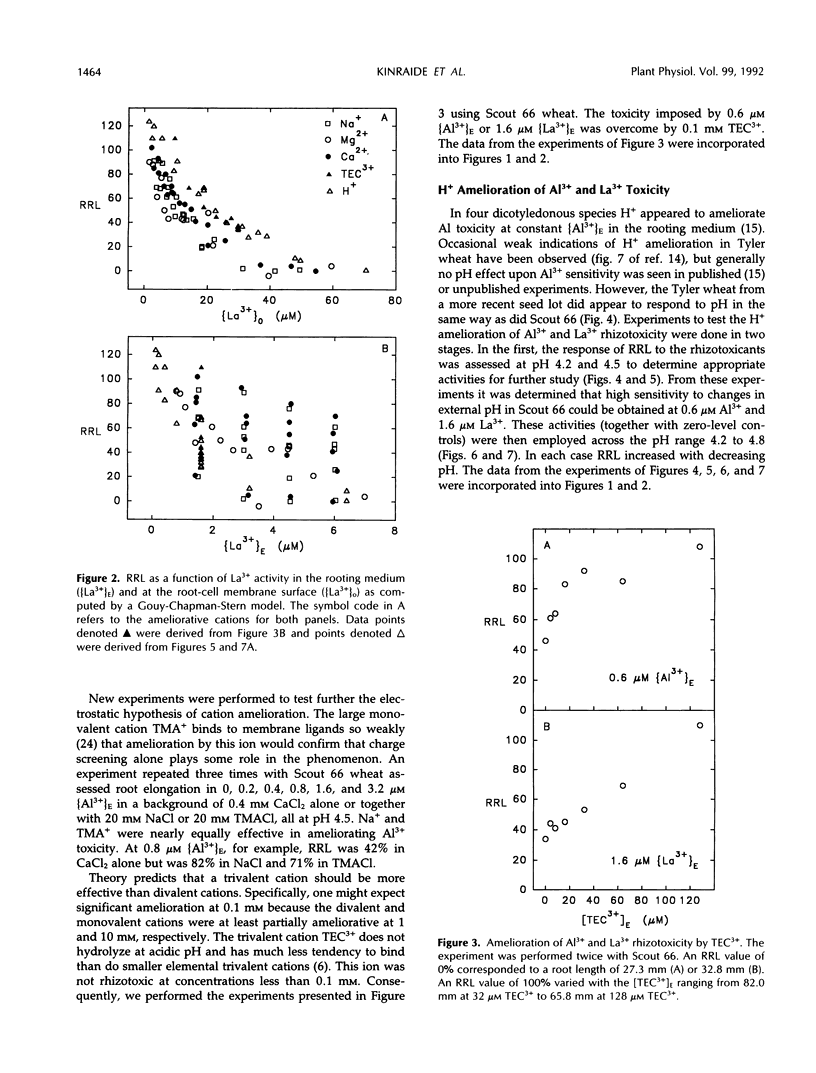

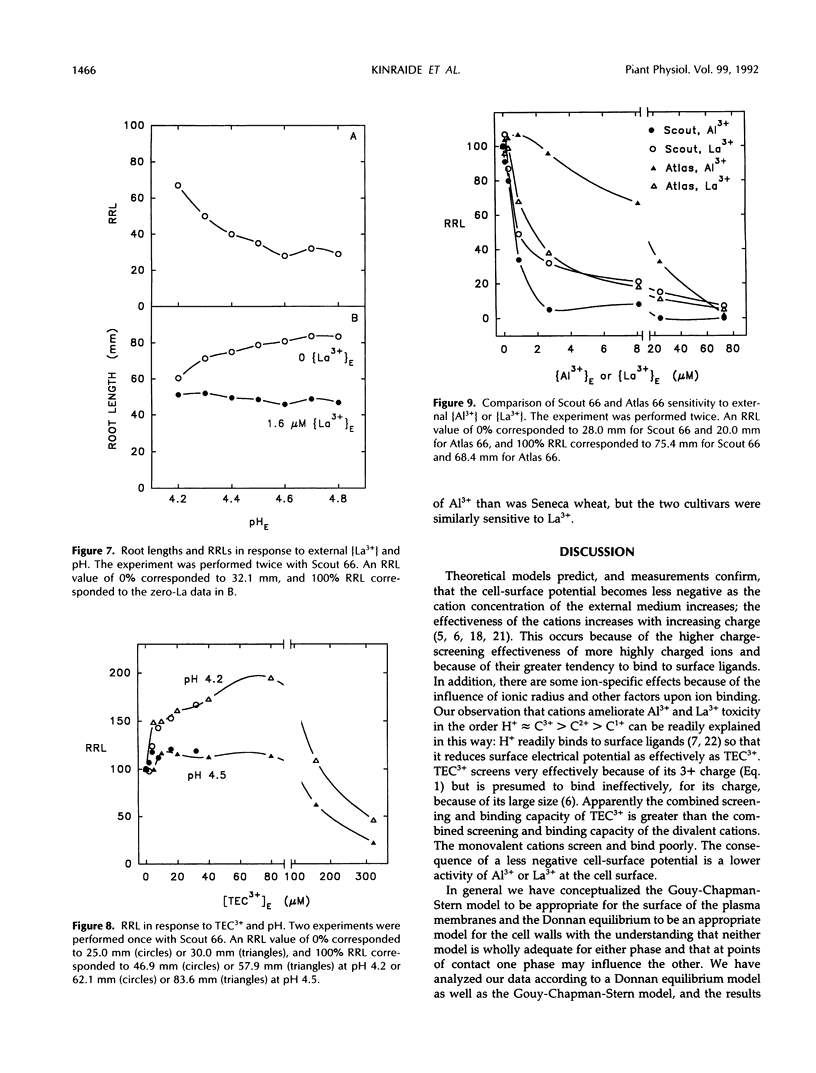
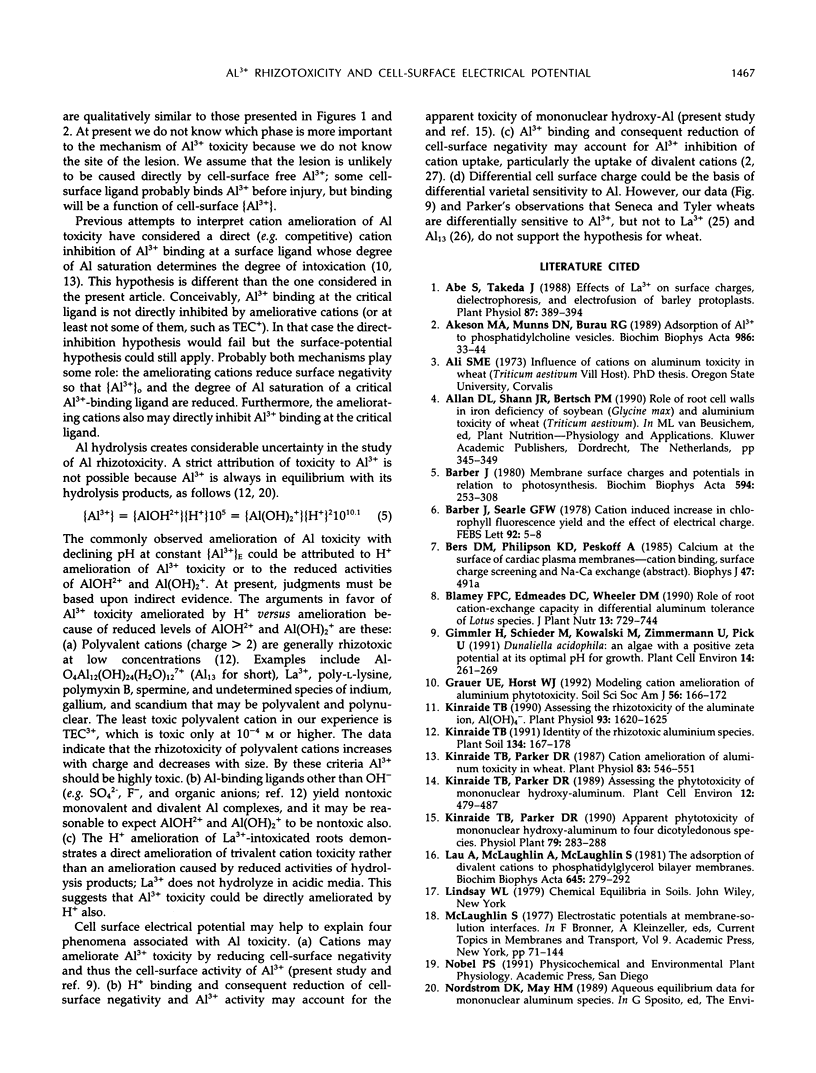
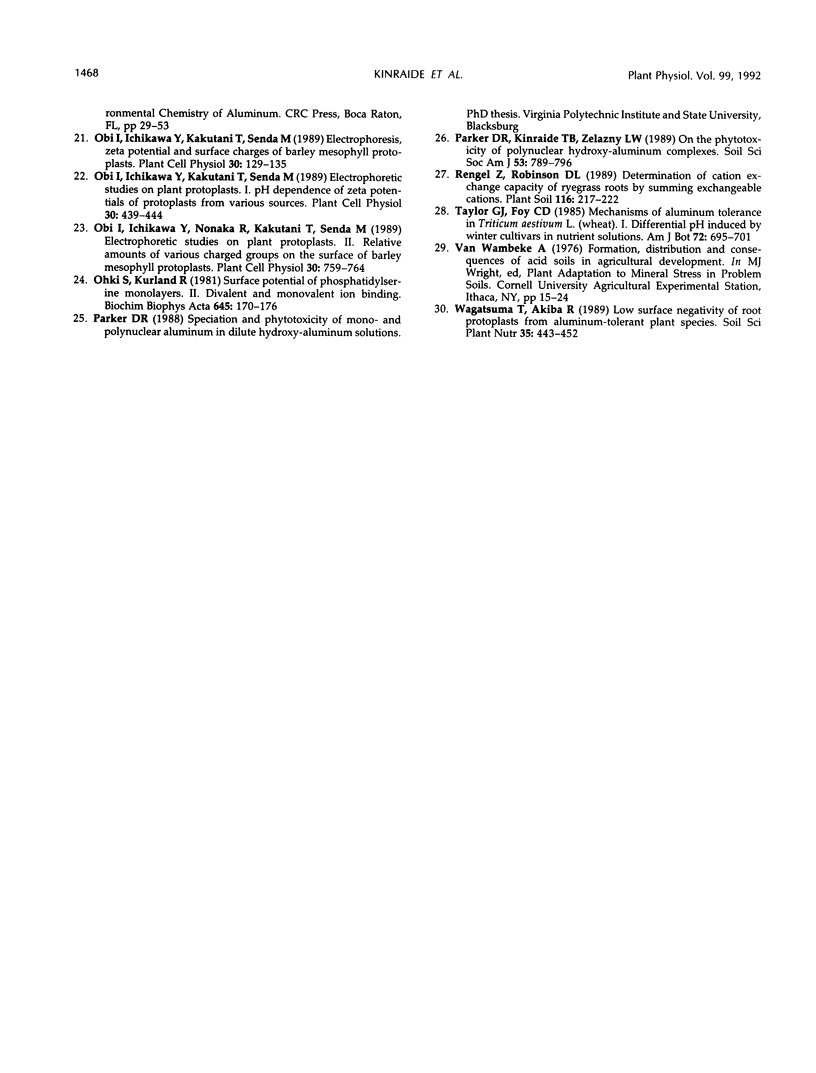
Selected References
These references are in PubMed. This may not be the complete list of references from this article.
- Abe S., Takeda J. Effects of la on surface charges, dielectrophoresis, and electrofusion of barley protoplasts. Plant Physiol. 1988 Jun;87(2):389–394. doi: 10.1104/pp.87.2.389. [DOI] [PMC free article] [PubMed] [Google Scholar]
- Akeson M. A., Munns D. N., Burau R. G. Adsorption of Al3+ to phosphatidylcholine vesicles. Biochim Biophys Acta. 1989 Nov 17;986(1):33–40. doi: 10.1016/0005-2736(89)90269-1. [DOI] [PubMed] [Google Scholar]
- Barber J. Membrane surface charges and potentials in relation to photosynthesis. Biochim Biophys Acta. 1980 Dec;594(4):253–308. doi: 10.1016/0304-4173(80)90003-8. [DOI] [PubMed] [Google Scholar]
- Kinraide T. B. Assessing the Rhizotoxicity of the Aluminate Ion, Al(OH)(4). Plant Physiol. 1990 Aug;93(4):1620–1625. doi: 10.1104/pp.93.4.1620. [DOI] [PMC free article] [PubMed] [Google Scholar]
- Kinraide T. B., Parker D. R. Cation amelioration of aluminum toxicity in wheat. Plant Physiol. 1987 Mar;83(3):546–551. doi: 10.1104/pp.83.3.546. [DOI] [PMC free article] [PubMed] [Google Scholar]
- Lau A., McLaughlin A., McLaughlin S. The adsorption of divalent cations to phosphatidylglycerol bilayer membranes. Biochim Biophys Acta. 1981 Jul 20;645(2):279–292. doi: 10.1016/0005-2736(81)90199-1. [DOI] [PubMed] [Google Scholar]
- Ohki S., Kurland R. Surface potential of phosphatidylserine monolayers. II. Divalent and monovalent ion binding. Biochim Biophys Acta. 1981 Jul 20;645(2):170–176. doi: 10.1016/0005-2736(81)90187-5. [DOI] [PubMed] [Google Scholar]


